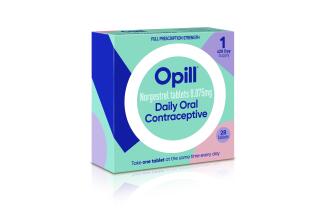Federal Panel Endorses Female Condom : Health: FDA advisory group says device should carry a warning that its effectiveness in preventing pregnancy is uncertain.
- Share via
WASHINGTON — A new condom for women, said by its manufacturer to offer better protection against AIDS and other sexually transmitted diseases, should be approved for use in the United States but with conditions, a federal advisory panel said Thursday.
The Food and Drug Administration’s Obstetrics and Gynecology Devices panel recommended that labeling on the device warn consumers that “the female condom is highly effective against the transmission of AIDS. This device is expected to reduce the transmission of sexually transmitted diseases, including AIDS. But the extent is not known.”
The device must also be accompanied by information on its failure rate in preventing pregnancy.
In addition to requiring the warnings, the committee called for more research on the device’s ability to block the spread of disease, saying that there is insufficient data to prove its effectiveness.
“In the face of a terrible epidemic, we recognize the need to provide access to a device even if the data base is not complete,” said FDA Commissioner David A. Kessler.
He said that while the new condom is “better than unprotected sex, we don’t want to increase the risk for those who would use something else. This is a device for those who will not use a male condom. The harder question is what do you tell a couple who could use either,” he said.
Although the panel’s reservations Thursday about the ability of the device to prevent disease was unexpected, both the panel and the agency already had expressed concern about whether it was as effective as other barrier methods in preventing pregnancy. Some agency officials were worried that women might switch from a better contraceptive to the new condom, placing themselves at a greater risk of pregnancy.
Those who supported approval of the device, however, argued that the option it would provide is an important--and potentially life-saving--one for women whose partners refuse to wear condoms.
The condom, manufactured by Wisconsin Pharmacal Co. of Jackson, Wis., and Chicago, already is being sold in England, Switzerland and Austria.
The panel had given the device a “conditional” recommendation early this year, saying that it wanted to see results of an expanded pregnancy rate study before making its final recommendation. At the time, results were available only for a small group of women.
Company officials insisted Thursday that the device has shown pregnancy protection rates similar to the male condom, contraceptive sponge, cervical cap and diaphragm. They said that more than 1,700 couples have used the device more than 30,000 times in 71 medical centers in 10 countries.
The expanded, six-month study on 200 women that was requested by the FDA panel earlier this year showed a failure rate of 12.2%, including both product and user failure, the company said. When used correctly, a 95% protection rate against pregnancy was achieved, the company said.
But FDA officials told panel members that the failure rate among women studied in Latin America was almost twice that and among certain age groups, more than 30%.
The agency said that the company may have underestimated the failure rate by as much as 10%.
The diaphragm and cervical cap have a failure rate of about 18%, while the male condom has a failure rate of about 12%. The cervical cap and diaphragm, however, offer no protection against sexually transmitted diseases.
Studies of the female condom have shown that the probability of women being exposed to semen inside the vagina because of breakage or other problems with the device is 2.8%, compared to 10.9% with the male condom, the company said.
FDA officials agreed that the device passed all of its strength tests, saying that the condom had been filled with helium and water, shot with lasers and used in rabbits to determine whether the animals suffered any adverse reactions. There were none, the agency said.
FDA researcher Richard Chiacchierini told panel members that, based on tested failure rates, the probability that a woman using the condom could be exposed to a sexually transmitted disease is one in five.
The condom, which will be sold under the name Reality, consists of a loose-fitting lubricated polyurethane sheath and two flexible polyurethane rings.






